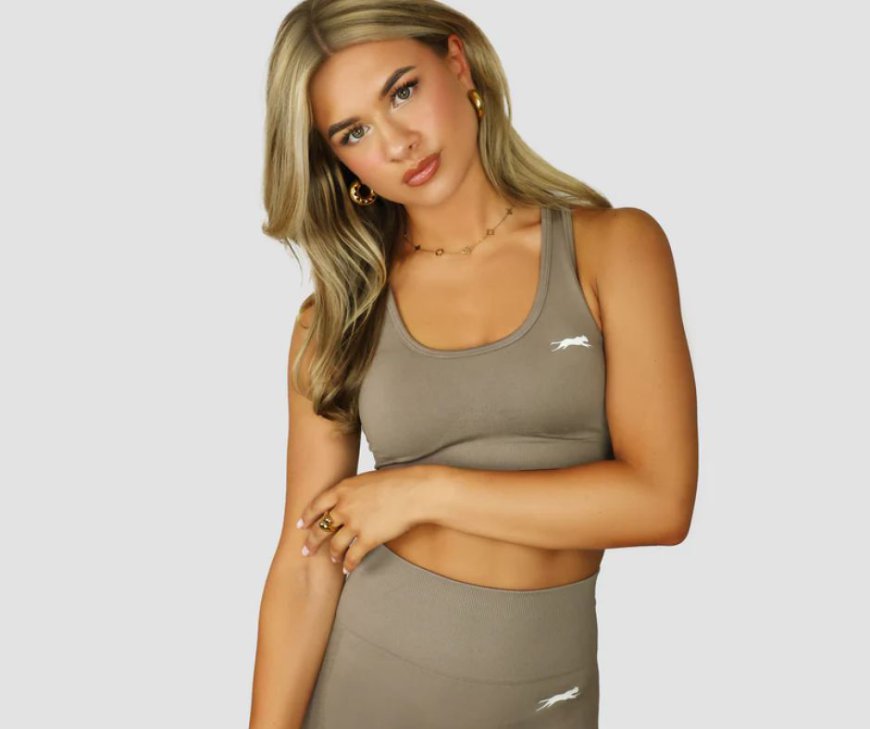The Role of Breathable Fabrics in Maximizing Workout Efficiency

When achieving your fitness goals, the right workout gear is just as essential as the exercises you perform. One key element that can impact your workout efficiency is the type of fabric you wear. Breathable fabrics are designed to keep you comfortable and help you get the most out of your workout. In this blog post, we'll explore the role of breathable fabrics in maximizing workout efficiency and why choosing suitable materials for your fitness journey is essential.
What Are Breathable Fabrics?
Breathable fabrics allow air to flow freely through them. This helps regulate your body temperature and keeps you cool, even during intense workouts. These fabrics also help wick away moisture (sweat), keeping your skin dry and comfortable.
In contrast, non-breathable fabrics can trap heat and moisture against your skin, causing you to feel sticky, hot, and uncomfortable. Wearing the wrong fabric can make it harder to focus on your exercises, leading to a less effective workout. Choosing the right Fabrics for Fitness Success is essential for optimizing your performance and maintaining comfort throughout your workouts.
Common Types of Breathable Fabrics
There are many different types of breathable fabrics available. Some of the most popular options for workout clothes include:
-
Cotton: Cotton is a natural fabric that is soft and breathable. However, it tends to absorb moisture, damping you during long workouts.
-
Polyester: Polyester is a synthetic fabric that is lightweight, durable, and excellent at wicking away moisture. It's a popular choice for workout clothes.
-
Nylon: Nylon is another synthetic fabric known for its breathability and moisture-wicking properties. It's also very stretchy, making it a great option for exercise.
-
Spandex (Lycra): Spandex is a highly stretchable fabric that allows for a full range of motion during workouts. It is often combined with other breathable materials to create flexible and comfortable workout clothes.
-
Bamboo: Bamboo fabric is becoming more popular for workout gear due to its natural breathability, softness, and eco-friendliness. It's also moisture-wicking and resistant to odour, making it a great choice for fitness enthusiasts.
Each of these fabrics has its own strengths, but they all share one important feature: they allow air to circulate, which is crucial to staying cool and comfortable during exercise.
How Breathable Fabrics Enhance Workout Efficiency
Regulates Body Temperature
One of the main benefits of breathable fabrics is their ability to regulate your body temperature. When you're working out, your body generates heat; if you're wearing a non-breathable fabric, that heat gets trapped against your skin. This can make you feel overheated and sluggish, which may cause you to tire out faster.
Breathable fabrics, however, allow heat to escape and air to flow through, keeping your body temperature balanced. This helps you stay cool and energized throughout your workout, allowing you to push harder and achieve better results.
Wicks Away Moisture
Breathable fabrics are designed to wick moisture away from your skin. Instead of soaking up sweat, these materials pull it to the surface where it can evaporate. This keeps you feeling dry and comfortable, even during intense exercises.
Staying dry during a workout is more than just a matter of comfort. When sweat is trapped against your skin, it can cause irritation, rashes, and even infections. Breathable fabrics help to prevent these issues, so you can focus on your workout without worrying about discomfort or skin problems.
Prevents Chafing and Irritation
Wearing non-breathable fabrics during a workout can lead to friction between your skin and clothing, often resulting in chafing. Chafing is uncomfortable, painful, and distracting, preventing you from giving your best effort.
Breathable fabrics, particularly soft and moisture-wicking, help reduce friction by keeping your skin dry and cool. This minimizes the risk of chafing and irritation, so you can exercise without discomfort.
Provides Flexibility and Comfort
Another way breathable fabrics contribute to workout efficiency is by offering flexibility and comfort. Many breathable materials, such as spandex or a blend, are stretchy and move with your body, allowing you to perform exercises easily.
Tight or restrictive clothing can limit your range of motion and make it harder to execute certain movements. With breathable, flexible fabrics, you can stretch, lift, and move freely, enhancing your performance and reducing the risk of injury.
The Importance of Quality Workout Gear
Investing in high-quality, breathable workout gear is not just about fashion—it's about function. Wearing the right fabrics can improve your workout efficiency, stay comfortable, and avoid unnecessary discomfort or distractions.
High-quality fabrics are also more durable, meaning they will last longer, saving you money in the long run. Quality workout gear is a smart investment in your fitness journey and overall well-being.
Conclusion
Breathable fabrics play a crucial role in helping you maximize your workout efficiency. By keeping you cool, dry, and comfortable, these fabrics allow you to focus on your exercises and push yourself to achieve your fitness goals. Whether you prefer natural fabrics like cotton or bamboo or synthetic materials like polyester and spandex, choosing the right breathable fabric is essential for getting the most out of your workouts.
Consider breathable materials from brands that prioritize comfort and performance to upgrade your workout wardrobe. One such brand is Cheetas, which offers a wide range of high-quality, breathable workout gear to help you stay on top of your fitness game.
